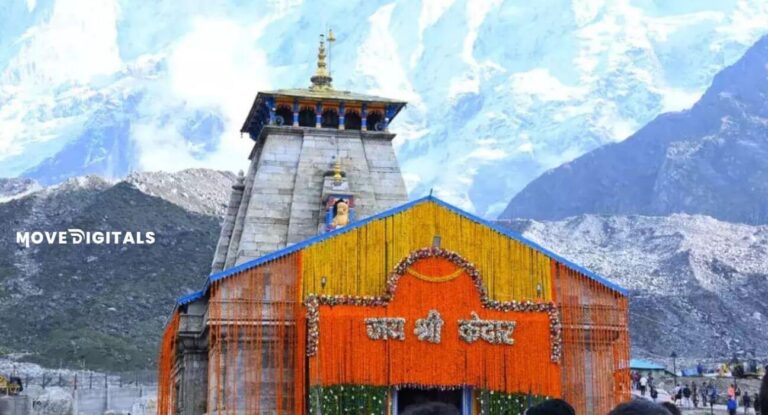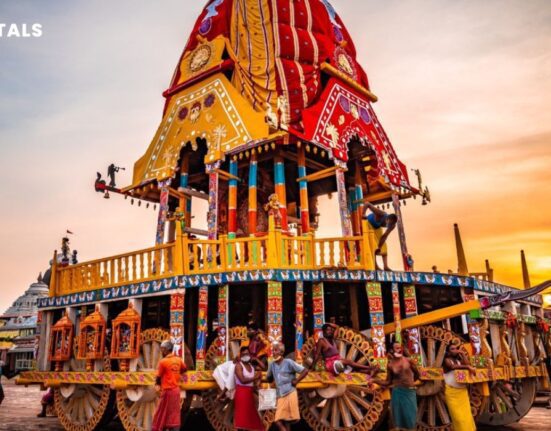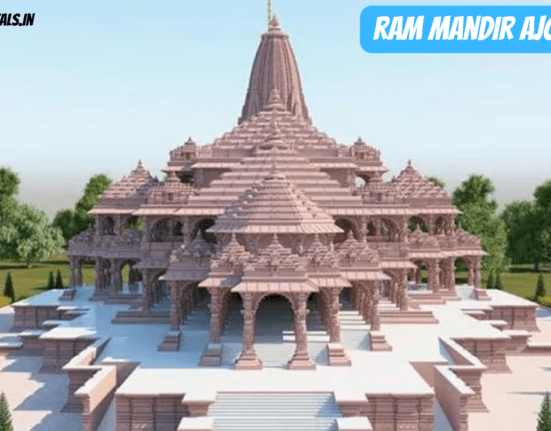Kedarnath, one of India’s holiest Hindu pilgrimage sites, is located in a tranquil environment. Kedarnath is situated 3,584 metres above sea level, looking out over the River Mandakini. Kedarnath is the most significant of the more than 200 shrines that are present in the area itself. The following information about Kedarnath will captivate you. The village is completely surrounded by two mountains, Nar and Narayan, making the area exceedingly scenic. The area is surrounded by a kind of mystical atmosphere of holiness that leaves an enduring impact on all who visit it.
Table of Contents
Introduction
Kedarnath, one of the 12 Jyotirlingas devoted to Lord Shiva, is a venerated temple situated in the Himalayas’ Rudra Mountain range, close to the Mandakini River. The temple is linked to the Mahabharata epic and is thought to have been around for a thousand years.
One of the tallest Jyotirlingas is Kedarnath, which is only accessible for half the year because to its high altitude. The shrine becomes inaccessible due to the harsh winters.






About:
The temple
The stunning temple building, which is made of enormous white stones, is thought to have been constructed about a thousand years ago. Along with the major god Lord Shiva, it also contains the statues of Shiva’s guardian, Lord Virbhadra, and his vehicle, Nandi. The temple also contains idols of the Pandava brothers, depicting their role in the Mahabharata and their relationship to both Lord Shiva and this shrine.
The Shiva Linga, which is his Sada Shiva form, is used to worship Shiva, the primary deity of the temple. Under the temple’s conical dome, at the centre of the building, is where the linga is located.
The five brothers and the Pandavas, the protagonists of the epic Mahabharata, are mentioned in the temple’s narrative. The Pandavas defeated the Kaurava, their brothers (cousins), to win the battle of Kurukshetra. They were no longer eligible to join the heavens due to fratricide, which made them sinful.
The only way out was to beg Shiva’s pardon. As a result, the brothers searched for God, and Shiva fled, believing them to be sinners. According to legend, Shiva changed into a bull so that the brothers would not be able to recognize him. But when they recognized him, Shiva—a bull at the time—vanished into the earth.
Later, the bull’s five distinct sections manifested themselves at five distinct locations, hence the name Panch Kedar. At Kedarnath, the bull’s hump first appeared.
How to reach the Temple:
Gaurikund is the starting point for a 14-kilometre walk to Kedarnath. The alternative option is to rent a helicopter from the government’s “Pawan Hans” helicopter service to get to the temple.
Other locations to visit:
While on a tour of the temple, you should stop at a few noteworthy places to view the area, such as:
Chorabari or Gandhi Sarovar: The lovely glacial lake Chorabari, now known as Gandhi Sarovar, is located 2 kilometres from Kedarnath. The location is significant because it is thought that Yudishthir, the eldest of the Pandavas, obtained salvation there.
Gaurikund: This is the starting point for the trip to the temple. The legend of Gauri, Lord Shiva’s wife, who is said to have performed penance here to win Shiva as her husband, is associated with Gaurikund. Lord Shiva finally appeared after countless years of adoration and granted Gauri’s request. They both got married not far from this location.
Before beginning their journey to Kedarnath, visitors walk a trail to Gaurikund’s thermal springs.
Shankaracharya Samadhi: This is the final resting place of Shri Adi Shankaracharya, a revered saint and philosopher from the seventh century.
A stunning alpine lake called Vasuki Tal is located about 6 kilometres away from Kedarnath.
The ideal time to travel:
April’s end to the beginning of November (except monsoon).
Distance:
Jolly Grant Airport is the closest one (251 kilometres)
Rishikesh is the closest railroad station (234 kilometres)
Visit Movedigitals.in for details on further places to visit in India.








